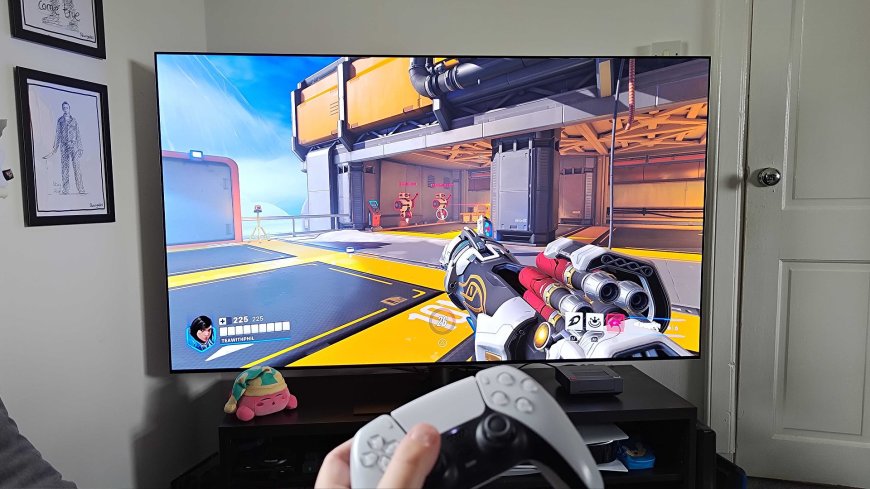Next-Level Gaming Performance: Xbox Series X for Least-Latency Game
In this article, we’ll walk you through practical steps to optimize Xbox Series X for low-latency gaming and elevate your entire gaming experience.

In the fast-paced world of online gaming, milliseconds matter. Whether you're diving into a high-stakes battle royale or exploring expansive open worlds, latency can mean the difference between victory and defeat.
We understand the demands of modern gamers and how crucial it is to achieve smooth, real-time gameplay. In this article, well walk you through practical steps tooptimize Xbox Series X for low-latency gamingand elevate your entire gaming experience.
Why Latency Matters in Gaming
Latency, often referred to as "input lag" or "ping", is the delay between your action (like pressing a button) and the game's response.
High latency leads to sluggish controls, delayed actions, and frustrating gameplay, especially in competitive titles likeCall of Duty, Fortnite, or Halo Infinite.
The Xbox Series X, with its advanced hardware and software, is designed for high performance, but getting the most out of it still requires the right configuration.
Step-by-Step: Optimize Xbox Series X for Low-Latency Gaming
Use a Wired Ethernet Connection
Wi-Fi may be convenient, but its not ideal for online gaming. A wired Ethernet connection provides a direct line to your router, reducing interference and signal dropouts.
Plug your Xbox Series X directly into the router using a high-quality Cat 6 or Cat 7 cable for the most stable connection.
Enable Low Latency Mode on Your TV or Monitor
Most modern TVs come with a "Game Mode" that disables unnecessary processing effects to reduce input lag. If you're using a gaming monitor, look for options like Variable Refresh Rate (VRR) or Auto Low Latency Mode (ALLM)both supported by Xbox Series X.
Update Your Console and Router Firmware
Always ensure your Xbox Series X and your router are running the latest firmware. Software updates often include performance improvements and bug fixes that enhance network stability and reduce latency.
Adjust Xbox Network Settings
Head into your Xbox settings and navigate to:
-
Settings > General > Network settings
-
Run a Network Test to check for NAT type, packet loss, and latency.
Make sure your NAT type is Open to allow smoother multiplayer connections. You can achieve this by enabling UPnP on your router or manually forwarding ports:
-
TCP: 3074
-
UDP: 88, 500, 3074, 3544, 4500
Choose the Right DNS Settings
Custom DNS servers like Google DNS (8.8.8.8 / 8.8.4.4) or Cloudflare (1.1.1.1) can sometimes reduce latency by offering faster domain resolution than your ISP.
To change DNS on Xbox Series X:
-
Go to Settings > General > Network settings > Advanced settings
-
Select DNS settings > Manual and input the desired DNS.
Close Background Apps and Downloads
Downloads or background applications can hog bandwidth and cause spikes in latency. Make sure no games or apps are updating while you're gaming online.
Upgrade Your Internet Plan if Needed
While latency isn't solely dependent on speed, a faster internet connection can still help reduce ping, especially if multiple devices are connected. For optimal performance, aim for:
-
At least 50 Mbps download speed
-
At least 10 Mbps upload speed
The Hardware Side: Accessorizing for Performance
Elite Controllers and High-Speed HDMI
Invest in a controller with low-latency wireless tech or connect your controller via USB for zero delay. Also, use the Ultra High-Speed HDMI cable that came with your Series X, plugged into an HDMI 2.1 port on your TV for features like 120Hz gaming and VRR.
Monitor Refresh Rates
If you're a serious competitive gamer, consider upgrading to a monitor with a 120Hz or higher refresh rate. This synchronizes better with the Xboxs frame rates and dramatically improves responsiveness.
Take on Future Gaming
We believe the gaming industry is evolving beyond just resolution and graphics. Speed, responsiveness, and seamless online integration are shaping the next generation of gaming.
With cloud gaming, AI-enhanced visuals, and lightning-fast SSDs becoming the norm, optimizing for low latency will soon be the baseline requirement, not an optional upgrade.
As we look toward innovations like AI-powered matchmaking, cloud-rendered environments, and real-time physics engines, the need for low-latency gaming infrastructure will only intensify. Thats why it's essential to lay the groundwork now by tweaking your setup.
Final Thoughts
Your Xbox Series X is a powerful machine, but without the right configuration, you might not be tapping into its full potential.
From wired connections and custom DNS settings to TV optimization and firmware updates, theres a lot you can do to optimize Xbox Series X for low-latency gaming.
For more gaming tips, tech insights, and performance optimization guides, stay tuned to Technology Drifts your hub for the latest in gaming and consumer technology.
Whether you're building a next-gen setup or just getting started, were here to guide you every step of the way.








































